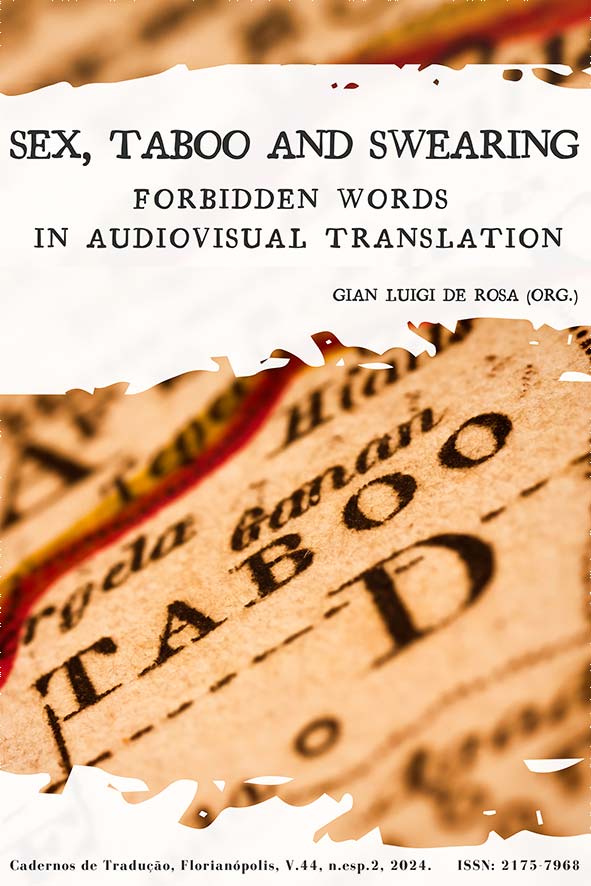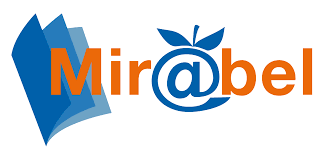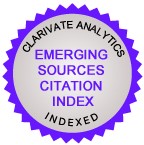Dubbing taboo words: insults and swearing in the French TV series Lupin
DOI:
https://doi.org/10.5007/2175-7968.2024.e99721Keywords:
insult, swearing, taboo language, French series, dubbingAbstract
This article aims at analysing conflicting movie (acting) lines embedded in the third season of Lupin, an acclaimed TV series among French and Italian audience and currently available on the famous streaming service Netflix. In particular, we will focus on the terms and phrases ascribable to taboo language from a contrastive perspective, in order to assess the accuracy (of the French-) Italian dubbing. In this respect, taking into consideration impoliteness categorizations available in literature about swear words and conflicting language, and considering the artificiality of movie conversation, we intend to systematise high frequently used terms in French colloquial speech presented on the screen such as putain, merde or foutre, in all its variants, without overlooking on insults, whose perlocutionary effect has surely less strength although they are often found in authentic daily interactions. In conclusion, we will briefly reflect on the concept of verbal violence strictly connected to cultural identity.
References
Azzaro, G. (2005). Four-letter films. Taboo language in movies. Aracne.
Bazzanella, C. (2020). Insulti e pragmatica: complessità, contesto, intensità. Quaderns d’Italià, 25, 11-26. https://doi.org/10.5565/rev/qdi.479
Brown, P., & Levinson, S. C. (1987). Politeness: Some universals in language usage. Cambridge University Press.
Caplow, T. (1968). Two against one: Coalitions in triads. Prentice-Hall.
Catania, A. (2013). La traduzione audiovisiva: tecniche, strategie e difficoltà. Proposta di traduzione di quattro articoli tecnico-informativi. [Prova finale di laurea]. Università Ca’ Foscari, Venezia. http://dspace.unive.it/bitstream/handle/10579/4044/822227-1174202.pdf?sequence=2
Chaume, F. (2004). Synchronization in Dubbing: A translational approach. In Orero, P. (Org.), Topics in Audiovisual Translation (pp. 35-52). John Benjamins.
Gambier, Y. (2003). Introduction. Screen Transadaptation: Perception and Reception. The Translator, 9(2). https://doi.org/10.1080/13556509.2003.10799152
Goffman, E. (1967). Interaction ritual: essays on face-to-face interaction. Aldine Publishing Company.
Grimshaw, J. (1990). Argument structure. The MIT Press.
Kurniawati T. R. A. (2019). Taboo Words in the TV Series Stranger Things. Lexicon, 6(1), 87-97. https://doi.org/10.22146/lexicon.v6i1.50312
Mason, S., & Rychard, S. (2005). Conflict Analysis Tools. Swiss Agency for Development and Cooperation (SDC) & Conflict Prevention and Transformation Division (COPRET).
Nencioni, G. (1976). Parlato-parlato, parlato-scritto, parlato-recitato. Strumenti Critici, X(1), 1-56.
Pavesi, M., & Malinverno, A. L. (1996). Usi del turpiloquio nella traduzione filmica. In Taylor C. (Org.), Tradurre il cinema. Atti Convegno, Trieste, 29-30 novembre 1996, 75-90.
Perego, E. (2005). La traduzione audiovisiva. Carocci.
Pistolesi, E. (2007). Identità e stereotipi nel discorso conflittuale. In: Pistolesi, E. & Schwarze, S. (Org.). Vicini/lontani. Identità e alterità nella/della lingua. Peter Lang.
Sabatini, F. (1982). La comunicazione orale, scritta e trasmessa. In: Boccafurni, A. M., Parisi, D. & Serromani, S. (Org.). Educazione linguistica nella scuola superiore. Istituto di Psicologia del CNR.
Sileo, A. (2015). Il doppiaggio: interferenze linguistiche sulla soglia tra inglese e italiano. Altre Modernità, 56-69. https://doi.org/10.13130/2035-7680/4625
Sileo, A. (2017). Una lingua scritta per essere recitata come se non fosse stata scritta: paradossi e conseguenze nella (finta) oralità dei prodotti cine-televisivi. In Romito, L. & Frontiera, M. (Org.). La scrittura all’ombra della parola. (pp. 73-87). Officinaventuno.
Snell-Hornby, M. (1997). Written to be Spoken: the Audio-medial Text in Translation. In Trosborg, A. Text Typology and Translation (pp. 277-290). John Benjamins.
Teston Bonnard, S. (2010). Étude des particules discursives dans des situations de parole particulière : les scénarios et leurs oralisations par les acteurs. In Neveu, F., Muni Toke, V., Durand, J., Klingler, T., Mondada, L. & Prévost, S. (Org). Congrès Mondial de Linguistique Française, (pp. 811-823). http://dx.doi.org/10.1051/cmlf/2010108
Treccani. (s.d.). Vocabolario Treccani online. Ultimo accesso: 29 nov. 2023. https://www.treccani.it/vocabolario/
Downloads
Published
How to Cite
Issue
Section
License
Copyright (c) 2024 Cadernos de Tradução

This work is licensed under a Creative Commons Attribution 4.0 International License.
Copyright Notice
Authors hold the copyright and grant the journal the right for their articles' first publication, being their works simultaneously licensed under the Creative Commons Attribution License (CC BY), which allows the sharing of such works with its authorship acknowledged and its initial publication in this journal.
Authors are allowed to enter into separate additional contractual arrangements for the non-exclusive distribution of the journal's published version of the work (e.g., post it to an institutional repository or as a book chapter, with an acknowledgment of its initial publication in this journal).






















































